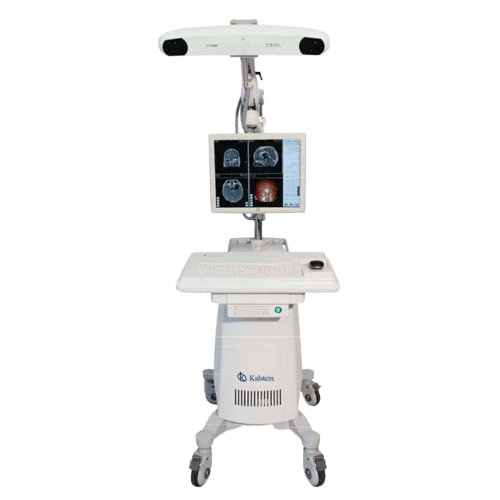Computer-assisted surgery are methods of computer technology for the realization and planning of a surgical intervention. Optical surgical navigation is considered, the passage of computer surgery as a traditional basic element resulting in touch control, stereoscopic vision, manual dexterity and complete visual control of the surgical field.
According to technological progress that has permanently improved the health sector, the world of medical image acquisition and processing has also presented a similar revolution. In large part, most surgeons are familiar with the concepts of multi-layered, high-definition spiral computed tomography (CT), high-resolution magnetic resonance imaging (MRI), and functional images such as those obtained by positron emission tomography (PET), as well as the ability to process the entire data flow so that the end user can perform three-dimensional (3D) reconstructions or by image fusion; as a result, a significant proportion of our surgical planning processes are already based on medical imaging.
Surgical Navigation Systems
These navigation systems help the execution and organization within the surgical field, allowing to guide the instruments that are connected to screens by sensors with imaging methods such as CT or MRI. These navigation systems are hospital equipment whose use has been on the rise, which make intervention not only easier, but safer, given that they act as a kind of physician’s assistant.
Operating navigation systems are an integral part of computer-assisted surgery (CAS), which represents a concept that supports surgical procedures with a foundation of digital imaging technology.
In this context, navigation systems provide surgeons with the opportunity to develop preoperative planning and accurate navigation of instruments during the surgical procedure. Likewise, the platforms in 3D models, used virtual navigation technology corresponding to the anatomy of the patient and in which the surgical instruments used by the surgeon, are followed by an optical localization device, so that its virtual image can be moved inside the model.
It is also called mixed or enhanced reality the use of pre-operative visual information directly on the treatment area of the patient, and by potentiation, it allows locating internal structures as a guide to the phases of the intervention, in which the surgeon must use special lenses or a stereoscopic helmet in which the images are fused. In this way, the surgeon harmonizes the appropriate reconstruction of the patient, in which he monitors his movements by means of an optical or electromagnetic tracking system. The computer matches real-time vision with 3D reconstructions based on pre-operative images, but also to simplify image-based assessments.
Benefits in the Use of Navigation Systems
Optical surgical navigation systems are methods intended to aid and accurately locate anatomical structures in open or percutaneous procedures. These systems provide optical tracking capabilities as well as integration with external devices such as microscopes and ultrasound. By using these optical navigation systems, the following benefits are presented:
- Ensures processes are safer and make it easier to generate data in any process within the OR
- Allow remote access for live transmissions from the surgery room to auditoriums, or even to other hospitals where other specialists can view procedures in order to guide or support the decisions of the medical team during the intervention.
- It allows greater safety in the interventions because this technology provides the surgeon with smaller instruments.
- Infection control, preventing the surgeon from contaminating himself with other elements outside the surgical field, having better handling on the visualization of different cuts of anatomical structures that are being projected as supporting images in the surgery rooms.
Optical Surgical Navigation System brand Kalstein
With the use of new technologies in surgical navigation systems, Kalstein offers innovative YR series equipment that is widely used for surgical visualization, planning and navigation in which minimizes medical risks, possesses in addition, the tomographic images in DICOM and captured with CT / C-arm / MRI / fMRI are applicable in the YR02143 surgical navigation system, which guides active or passive markers that provide precision with advanced optical tracking systems. The method of 3D simulation and modeling of anatomical structures in material (such as skin, skull, brain tissue or target injury) can be easily defined by surgical convenience. Through navigation systems, it provides operators with intelligent software that will help calibrate and compensate for unexpected changes in anatomical structure and brain change induced by removal of the intracranial injury area.
At Kalstein, we have the best advice you can enjoy and the range of products that meets your requirements, for this, enjoy our catalog HERE. We are manufacturers and offer you the best prices so that your purchase is the right one. HERE


